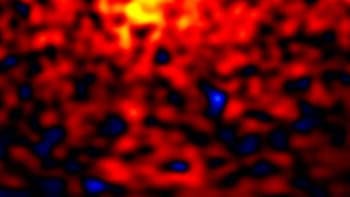
By Hamish Johnston
“On and around October 31, 2017, the world will celebrate the hunt for the unseen…” is the message on the Dark Matter Day website, which has been put together by physicists at universities and research labs across the globe. The site has links to more than 100 online and real-life events taking place in October and November of this year in more than 20 countries worldwide.
Why celebrate dark matter? Why not? After all, the elusive dark stuff appears to account for about 85% of the matter in the universe and its gravitational pull defines the fabric of the cosmos at galactic and greater distance scales. Furthermore, working out exactly what dark matter is could provide valuable information about physics beyond the Standard Model.
At 18:00 GMT today you can tune in to Sarah Malik of Imperial College London, who will be taking questions about dark matter on a Reddit Ask Me Anything. Just before that, at 17:30 GMT, you can have a peek in the clean room at SLAC in California where the huge digital camera for the Large Synoptic Survey Telescope (LSST) is being built.
Based in Chile, the LSST will begin observing in 2021 and one of its primary goals is to create the best ever 3D map of dark matter in the universe. Rather than imaging dark matter directly – which is impossible because it doesn’t interact with light – the LSST will look at how dark matter’s gravitational tug distorts light from distant galaxies and galactic clusters.
At the risk of being apocryphal on Dark Matter Day, there is a possibility that dark matter doesn’t exist. Instead, the gravitational effect that it appears to have on visible matter could be explained by theories such as “modified Newtonian dynamics” (MOND) or other schemes that modify our conventional understanding of how gravity acts over large distances.
It turns out that the recent observation of gravitational waves and electromagnetic radiation from the merger of two neutron stars offers a way of testing theories such as MOND – according to a preprint on arXiv written by four physicists in Turkey, India and the US. The quartet calculates that if dark matter does not exist (and modified gravity is real) then the gravitational waves from the merger should have arrived 1000 days before the first gamma rays from the event were detected. Instead, the gamma rays turned-up just 1.7 s after the gravitational waves.
A triumph for dark matter, perhaps, but those calculations get us no closer to understanding exactly what dark matter is. Indeed, experiments that try to detect dark matter have so far only succeeded in telling us what dark matter isn’t.
Just yesterday two dark-matter searches reported that they have not detected the dark stuff. One is the XENON1T experiment at Italy’s Gran Sasso National Laboratory and the other is PandaX-II at the China Jinping Underground Laboratory. Both cost considerable sums of money to build and represent the hopes and dreams of many physicists worldwide. Rather than declaring this a failure, Fermilab’s Dan Hooper points out that the two null results “have further ruled out many theoretically attractive dark matter particle candidates”. You can read his article “The relentless hunt for dark matter” in Physics.



